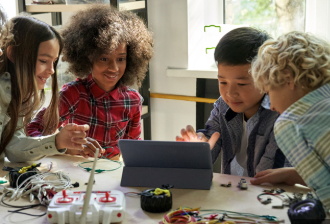Learning doesn’t always have to feel like a chore. In fact, one of the most effective ways to make learning more enjoyable and memorable is through games. When used thoughtfully, games can help students of all ages stay engaged, build critical thinking skills, and even improve teamwork and motivation. Whether you’re a teacher, a parent, or a learner yourself, here’s how you can use games to support educational goals in a fun, positive way.
1. Make Learning Interactive and Fun
Games capture attention in a way that traditional lessons sometimes can’t. They create a sense of excitement and curiosity that encourages active participation. Whether it’s a quiz, a puzzle, or a digital adventure, games can turn learning into something students look forward to. For example, a simple word game can strengthen vocabulary, while a strategy game can boost problem-solving skills.
2. Reinforce What’s Already Been Taught
Games are a great way to review and reinforce lessons. After teaching a topic, you can use a game to help learners practice and apply what they’ve learned. This repetition helps strengthen memory without feeling repetitive. Flashcard games, matching activities, or educational board games are great tools for this.
3. Encourage Teamwork and Communication
Many games involve collaboration and teamwork, which helps students build important social skills. Group games encourage learners to communicate, share ideas, and solve problems together. These skills are just as important as academic knowledge and can lead to a more supportive and interactive learning environment.
4. Support a Variety of Learning Styles
Not everyone learns the same way. Some learners benefit from visual aids, others prefer hands-on activities. Games often combine different elements—visuals, sound, movement, and interaction—which can make it easier for different types of learners to connect with the material. For example, educational apps with interactive elements can help visual and kinesthetic learners stay engaged.
5. Build Confidence Through Play
Games create a safe space where making mistakes is part of the process. Instead of feeling discouraged by a wrong answer, learners are more likely to try again and learn from the experience. This trial-and-error approach helps build confidence and resilience—valuable traits both inside and outside the classroom.
6. Use Technology to Enhance Game-Based Learning
Educational apps and websites offer countless game-based learning tools. Many of these platforms are designed to align with school curriculums while making learning more dynamic. Just be sure to choose age-appropriate, well-reviewed apps that focus on positive educational outcomes.
7. Create Your Own Learning Games
You don’t need a fancy app to use games in learning. You can create your own! Use index cards to make memory games, turn review questions into a bingo board, or build a scavenger hunt based on facts or vocabulary words. These simple, creative activities can be tailored to suit any subject or age group.
Conclusion
Using games to enhance learning is a smart and enjoyable approach that keeps learners engaged, motivated, and curious. When learning feels fun, students are more likely to participate and retain information. Whether in the classroom, at home, or online, educational games can be a powerful tool to support growth and make education a positive experience. So go ahead—turn playtime into a learning opportunity!














